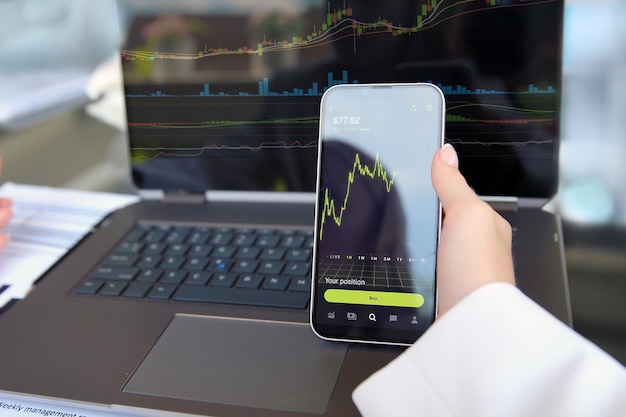
The Science of Market Making in Crypto Trading
Introduction
Market making plays a pivotal role in the dynamics of cryptocurrency trading, serving as a cornerstone for liquidity provision and price stability within these volatile markets. In cryptocurrency exchanges, where assets trade 24/7 across global markets, market makers play a crucial role in facilitating smooth and efficient transactions. Understanding the principles and mechanics of market making in the crypto space is essential for traders and investors seeking to navigate these markets confidently.
Importance of Market Making in Crypto Trading
Market making involves continuously quoting buy and sell prices for a particular asset, creating a market where buyers and sellers can execute trades promptly. In cryptocurrency trading, where asset prices can experience rapid fluctuations and trading volumes vary widely, efficient market makers are vital for ensuring liquidity and minimizing price slippage. Without market makers, the bid-ask spreads could widen significantly, making it more costly for traders to execute their orders and leading to increased market volatility.
Objectives of Market Making
The primary objectives of market making in cryptocurrency trading revolve around maintaining tight bid-ask spreads, managing inventory risk, and providing continuous liquidity to the market. By offering competitive prices to buy and sell assets, market makers encourage trading activity and help stabilize prices. Additionally, effective inventory management is crucial for market makers to mitigate the risk of holding large positions in volatile assets, as sudden price movements can result in substantial losses. Overall, the ultimate goal of market making is to foster a liquid and orderly market environment conducive to efficient price discovery and trading execution.
Understanding Market Making
Market making is a fundamental concept in financial markets, encompassing the activities of specialized traders or firms that stand ready to buy and sell securities at publicly quoted prices. By providing continuous liquidity, market makers facilitate the smooth functioning of markets and enable participants to execute trades with minimal price impact. In traditional financial markets, such as equities and foreign exchange, market making has long been established as an essential component of market infrastructure.
Role of Market Makers
Market makers act as intermediaries between buyers and sellers, bridging the gap between supply and demand. They accomplish this by continuously quoting bid and ask prices for a particular asset, effectively creating a two-sided market. In cryptocurrency trading, where assets are often traded across multiple exchanges with varying liquidity levels, market makers play a crucial role in ensuring that trading can occur efficiently across platforms. Without market makers, the fragmentation of liquidity across exchanges could lead to inefficiencies and increased trading costs for market participants.
Liquidity Provision
One of the primary functions of market makers is to provide crypto liquidity to the market by offering to buy or sell assets at competitive prices. By maintaining a tight bid-ask spread, market makers reduce the cost of trading for market participants and encourage trading activity. In cryptocurrency markets, where liquidity can vary significantly between different assets and trading pairs, market makers play a vital role in bridging liquidity gaps and improving overall market efficiency. Additionally, market makers help absorb excess supply or demand, preventing large order imbalances from causing sharp price movements.
Price Stabilization
Another critical role of market makers is to help stabilize prices by dampening short-term fluctuations and preventing excessive volatility. Through their continuous quoting of bid and ask prices, market makers provide a reference point for market participants and help anchor prices around fundamental values. This price stabilization function is particularly crucial in cryptocurrency markets, which are often characterized by high levels of volatility and speculative trading activity. By providing liquidity and stability, market makers contribute to the overall health and resilience of the market ecosystem.
Mechanics of Market Making in Crypto Trading
Market making in cryptocurrency trading involves a set of sophisticated strategies and techniques designed to manage risk and optimize trading performance. Unlike traditional financial markets, cryptocurrency markets operate 24/7 and exhibit unique characteristics such as high volatility and thin liquidity, presenting challenges and opportunities for market makers.
Order Placement and Quoting
At the core of market making is the process of order placement and quoting, where market makers continuously update their bid and ask prices based on market conditions and incoming order flow. Market makers use proprietary algorithms and trading strategies to dynamically adjust their quotes in response to changes in market dynamics, such as fluctuations in asset prices and trading volumes. By strategically placing orders at various price levels, market makers seek to capture the spread between the bid and ask prices while managing inventory risk.
Inventory Management
Effective inventory management is essential for market makers to mitigate the risk of holding positions in volatile assets. Market makers employ sophisticated risk management techniques to monitor their inventory levels and adjust their trading strategies accordingly. This may involve dynamically hedging their positions in the underlying asset or employing statistical arbitrage strategies to exploit pricing inefficiencies across different trading venues. By actively managing their inventory, market makers can reduce their exposure to adverse price movements and enhance their overall trading performance.
Algorithmic Trading Systems
In the fast-paced world of cryptocurrency trading, market makers rely heavily on algorithmic trading systems to execute trades quickly and precisely. These algorithmic systems can process vast amounts of market data in real time and make split-second trading decisions based on pre-defined parameters and trading rules. By leveraging automation, market makers can react swiftly to changing market conditions and capitalize on possible trading opportunities. However, designing and implementing algorithmic trading systems requires careful consideration of latency, order execution quality, and regulatory compliance.
Market Making Strategies
Market makers like Yellow Capital, Empirica, and others employ various trading strategies to optimize their performance in cryptocurrency markets. These may include traditional crypto market-making strategies, such as providing liquidity on both sides of the market and earning the bid-ask spread, as well as more advanced strategies, such as statistical arbitrage, volatility trading, and market-neutral strategies. The choice of strategy depends on factors such as market conditions, asset liquidity, and risk tolerance. By diversifying their trading strategies, market makers can adapt to changing market conditions and maximize their profitability over time.
Factors Influencing Market Making in Crypto Trading
Market making in cryptocurrency trading is influenced by myriad factors that can impact trading performance and profitability. Understanding these factors is essential for market makers to adapt their strategies and effectively navigate the dynamic nature of cryptocurrency markets.
Market Volatility
Volatility is a defining characteristic of cryptocurrency markets, with prices often experiencing rapid and unpredictable fluctuations. High levels of volatility can present both opportunities and challenges for market makers. On the one hand, increased volatility can lead to wider bid-ask spreads, allowing market makers to capture larger profits per trade. On the other hand, heightened volatility also increases the risk of adverse price movements and potential losses for market makers. As such, market makers must carefully monitor market volatility and adjust their trading strategies to mitigate risk.
Order Flow Dynamics
Order flow dynamics are crucial in determining cryptocurrency market conditions and liquidity levels. Market makers closely monitor incoming order flow, including the size, frequency, and direction of trades, to gauge market sentiment and adjust their pricing accordingly. Large buy or sell orders can significantly impact market prices and liquidity, influencing the behavior of market makers and other market participants. Market makers can identify trading opportunities by analyzing order flow data in real time and adjust their strategies to optimize trading performance.
Regulatory Developments
Regulatory developments and compliance requirements can significantly impact market making activities in cryptocurrency trading. As the regulatory landscape evolves, market makers must stay informed about relevant regulations and ensure compliance with applicable laws and regulations. Regulatory changes, such as restrictions on leverage, trading hours, or the introduction of new reporting requirements, can affect trading operations and profitability for market makers. Market makers can mitigate legal and reputational risks while operating in a rapidly evolving regulatory environment by maintaining robust compliance procedures and staying abreast of regulatory developments.
Technological Infrastructure
The technological infrastructure supporting cryptocurrency trading is crucial in enabling market making activities. Market makers rely on fast and reliable trading platforms, data feeds, and connectivity solutions to execute trades with low latency and minimal slippage. The quality of execution and access to liquidity can vary significantly depending on the infrastructure and trading venues market makers utilize. As such, market makers invest heavily in technology infrastructure and connectivity to gain a competitive edge. Additionally, advancements in technology, such as the adoption of blockchain technology and decentralized exchanges, may introduce new opportunities and challenges for market makers in the future.
Risks and Challenges in Crypto Market Making
Market making in cryptocurrency trading is associated with various risks and challenges that market makers must navigate to maintain profitability and sustainability. These risks stem from the unique characteristics of cryptocurrency markets and external factors that can impact trading performance.
Price Slippage
Price slippage refers to the difference between the expected execution price of a trade and the actual price at which the trade is executed. In cryptocurrency markets, where liquidity can be thin and volatility high, price slippage can occur frequently, particularly for large orders. Market makers must carefully manage order placement and execution to minimize slippage and avoid unnecessary trading costs. Advanced trading algorithms and smart order routing strategies can help mitigate the risk of price slippage by dynamically adjusting order sizes and placement based on market conditions.
Adverse Selection
Adverse selection occurs when market makers are consistently matched with informed traders with superior information about market conditions or order flow. In cryptocurrency markets, where information asymmetry is common, and insider trading can occur, market makers may face the risk of adverse selection when providing liquidity. Market makers employ sophisticated risk management techniques and surveillance systems to mitigate this risk to detect and deter potentially manipulative trading activity. Additionally, market makers may adjust their pricing and quoting strategies to reflect their assessment of market conditions and minimize the risk of adverse selection.
Regulatory Risks
Regulatory risks pose a significant challenge for market makers operating in cryptocurrency trading as the regulatory landscape continues to evolve and expand. Regulatory uncertainty, enforcement actions, and compliance requirements can impact market making activities and profitability. Market makers must stay informed about relevant regulations and ensure compliance with applicable laws and regulations in all their jurisdictions. Failure to comply with regulatory requirements can result in fines, legal sanctions, or reputational damage, posing a threat to the viability of market making operations.
Market Manipulation
Market manipulation is a pervasive risk in cryptocurrency markets, where trading volumes are often concentrated in a few exchanges, and liquidity can be easily manipulated. Market makers may encounter manipulation tactics such as spoofing, wash trading, and pump-and-dump schemes, which can distort market prices and undermine trading integrity. To mitigate the risk of market manipulation, market makers collaborate with regulators, exchange operators, and industry participants to implement surveillance measures and enhance market transparency. Additionally, market makers may adopt best practices and code of conduct guidelines to promote fair and orderly markets and deter manipulative trading activity.
By proactively addressing these risks and challenges, market makers can enhance cryptocurrency markets’ resilience and efficiency while safeguarding their interests and reputation.
Future Trends and Developments
The market-making landscape in cryptocurrency trading continues to evolve rapidly, driven by technological innovation, regulatory developments, and shifting market dynamics. Understanding emerging trends and developments is essential for market participants to anticipate future challenges and opportunities in crypto.
Rise of Decentralized Finance (DeFi)
Decentralized finance (DeFi) represents a paradigm shift in traditional financial services, enabling peer-to-peer lending, borrowing, and trading of digital assets without intermediaries. Market makers increasingly participate in DeFi platforms to provide liquidity and facilitate trading activity. Automated market makers (AMMs) and decentralized exchanges (DEXs) have emerged as prominent venues for market making in DeFi, offering new opportunities for liquidity providers to earn fees and rewards by supplying assets to liquidity pools.
Integration of Artificial Intelligence (AI) Technologies
Artificial intelligence (AI) technologies are increasingly important in market making operations, enabling market participants to analyze vast amounts of data and make informed trading decisions with speed and precision. Machine learning algorithms and predictive analytics tools are deployed to optimize market making strategies and enhance trading performance. AI-driven trading systems can adapt to changing market conditions in real-time, identify trading opportunities, and manage risk more effectively, improving overall profitability and efficiency.
Institutional Participation and Maturation of Market Infrastructure
The entry of institutional investors into the cryptocurrency market drives demand for sophisticated trading solutions and institutional-grade market infrastructure. Market makers are adapting their strategies and technology infrastructure to cater to the needs of institutional clients, such as hedge funds, asset managers, and proprietary trading firms. Moreover, the development of regulated trading venues, custody solutions, and prime brokerage services is enhancing the credibility and maturity of the cryptocurrency market, attracting greater participation from traditional financial institutions and increasing liquidity.
Regulatory Evolution and Compliance Requirements
Regulatory oversight of cryptocurrency trading continues to evolve as regulators seek to address investor protection, market integrity, and financial stability concerns. Market makers must stay abreast of regulatory developments and ensure compliance with applicable laws and regulations to mitigate legal and reputational risks. Implementing regulatory frameworks, such as licensing requirements, reporting obligations, and market surveillance measures, may impact market making operations and trading strategies. Market participants actively engage with regulators to shape regulatory policies and promote responsible innovation in the cryptocurrency market.
By embracing these future trends and developments, market makers can position themselves for success in an increasingly competitive and dynamic market environment. By leveraging technology, adapting to regulatory changes, and collaborating with industry stakeholders, market makers can continue to play a crucial role in fostering liquidity, efficiency, and stability in cryptocurrency trading.
Market making in cryptocurrency trading is a multifaceted endeavor encompassing various strategies, technologies, and risk management techniques. Throughout this article, we have explored the fundamental principles of market making, its role in fostering liquidity and stability in crypto markets, and the challenges and opportunities market participants face.
From understanding the mechanics of market making to examining real-world examples and future trends, it is evident that market makers play a crucial role in shaping the dynamics of cryptocurrency trading. By continuously providing liquidity, managing risk, and adapting to evolving market conditions, market makers contribute to the efficiency and resilience of cryptocurrency markets.
As the cryptocurrency market continues evolving, market participants must stay informed about emerging trends, regulatory developments, and technological innovations. By embracing new technologies such as decentralized finance and artificial intelligence, market makers can enhance their trading strategies and maintain a competitive edge.
Furthermore, market makers must prioritize compliance with regulatory requirements and best practices to ensure the integrity and stability of cryptocurrency markets. Crypto market makers can build trust and confidence among market participants and regulators by fostering transparency, fairness, and accountability.
In conclusion, market making remains a cornerstone of cryptocurrency trading, providing essential liquidity and price discovery mechanisms that underpin the functioning of these dynamic markets. For traders and investors looking to engage with market making in the crypto space, it is imperative to understand the nuances of market dynamics, employ robust risk management practices, and stay abreast of market developments. By embracing innovation, collaboration, and responsible trading practices, market makers can navigate the challenges and capitalize on the opportunities presented by cryptocurrency markets.



